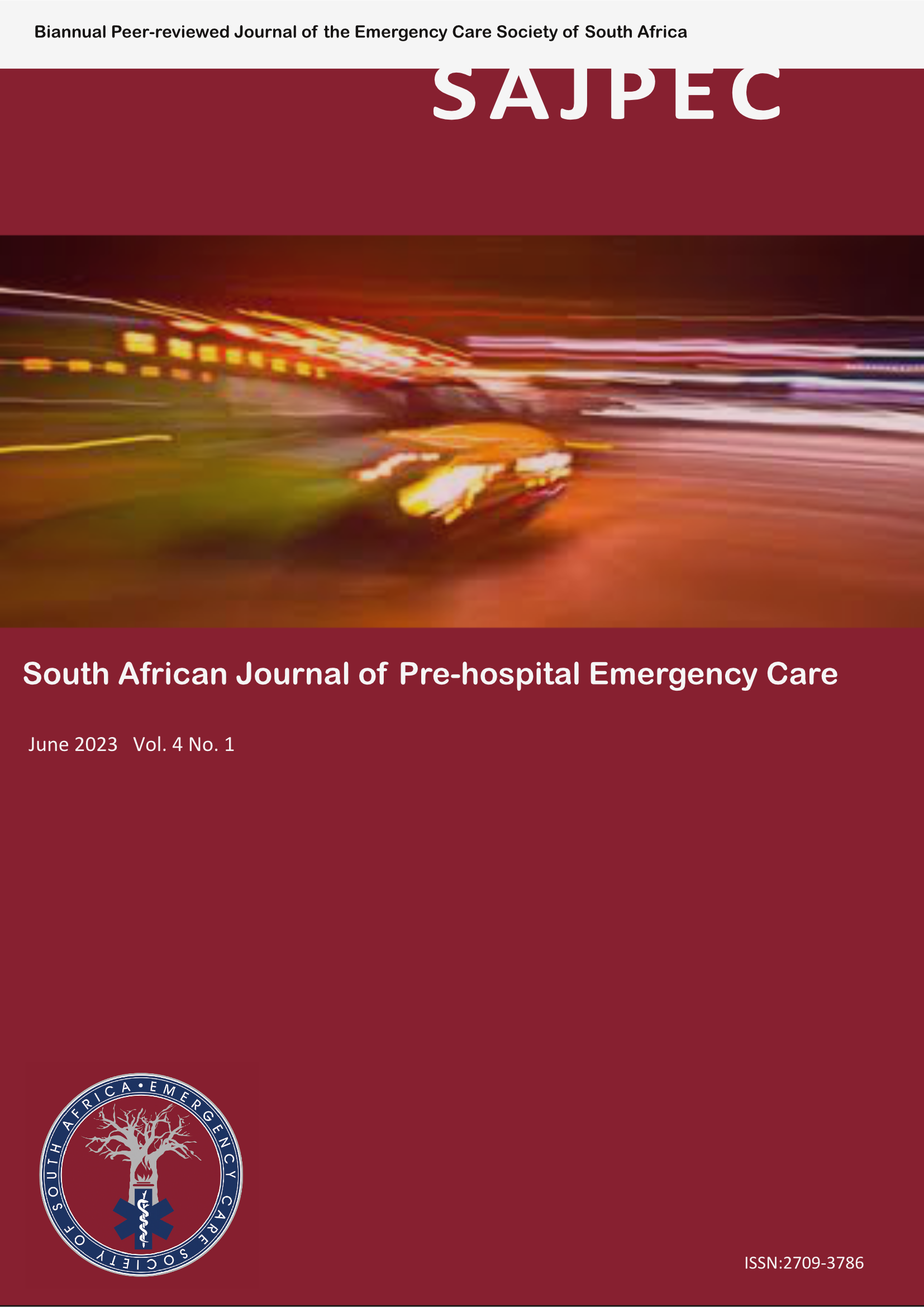Emergency Medical Service response and mission times in an African metropolitan setting
DOI:
https://doi.org/10.24213/4-1-5879Abstract
Background: Emergency Medical Services (EMS) aim to respond to emergencies, treat and transport patients efficiently thus ensuring the ambulance call or “mission” is completed with ambulances available to service the next call as soon as possible. A typical mission may be divided into activities, each linked to a set time interval. The response time interval starts from the time a call is received by the call centre until the ambulance arrives on scene. The patient care interval includes the time taken to treat and transport the patient to hospital. The total mission time can be viewed as the time from when a call is first received by the call centre until the ambulance dispatched to that incident is again available to service the next call. The aim of this study was to describe response interval, patient care interval and total mission times routinely associated with servicing emergency incidents within a metropolitan public sector EMS in South Africa.
Methods: A quantitative, prospective, descriptive design was followed wherein time intervals associated with 784 missions were analysed to document and describe response time interval, patient care interval and total mission times.
Results: On average crews took 0h 23:16 to respond to incidents before spending an additional 0h 43:20 treating and transporting their patients. Lengthy delays were noted between arrival at hospital and
crews booking available for the next call. This led to total mission times averaging 2h 11:00.
Conclusion: Average response and patient care time intervals noted in our study were longer than national and international norms and standards. Delays between arrival at hospital and crews booking available to service the next call led to average mission times of over 2 hours. This negatively impacts on availability of ambulances. Further studies are recommended to explore factors that may be contributing to the lengthy response and mission times reported in this study.
Downloads
Additional Files
Published
Issue
Section
License
Authors grant the Emergency Care Society of South Africa the exclusive right to publish, display, reproduce and/or distribute the work in print and electronic format and in any medium known or hereafter developed, including for commercial use. Authors also agree that the Emergency Care Society of South Africa may retain in print or electronic format more than one copy of the work for the purpose of preservation, security and back-up.


